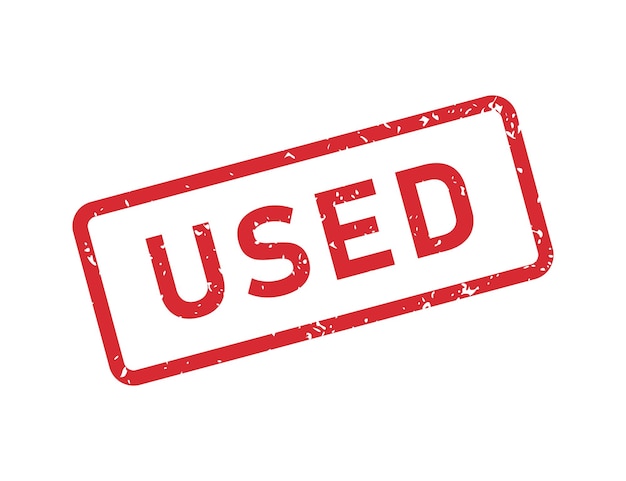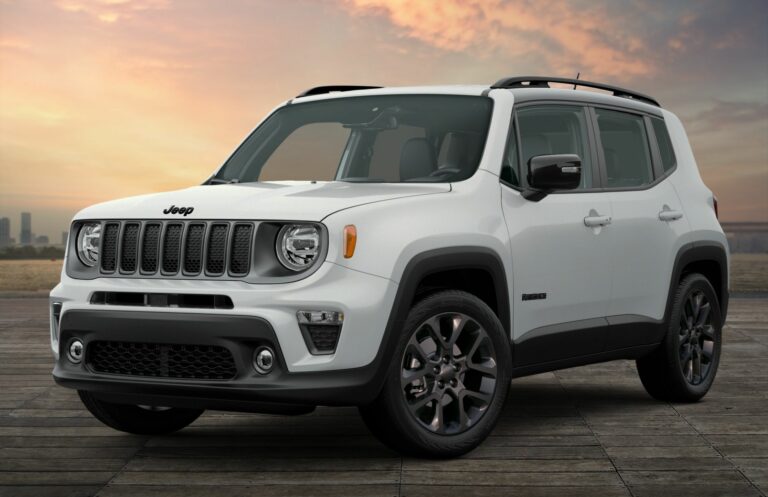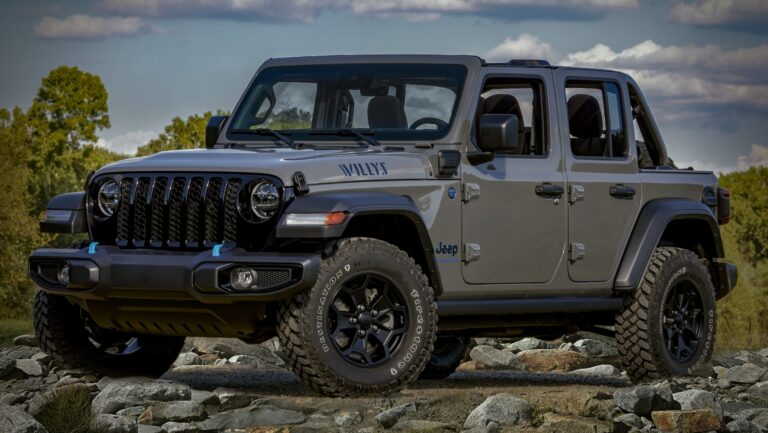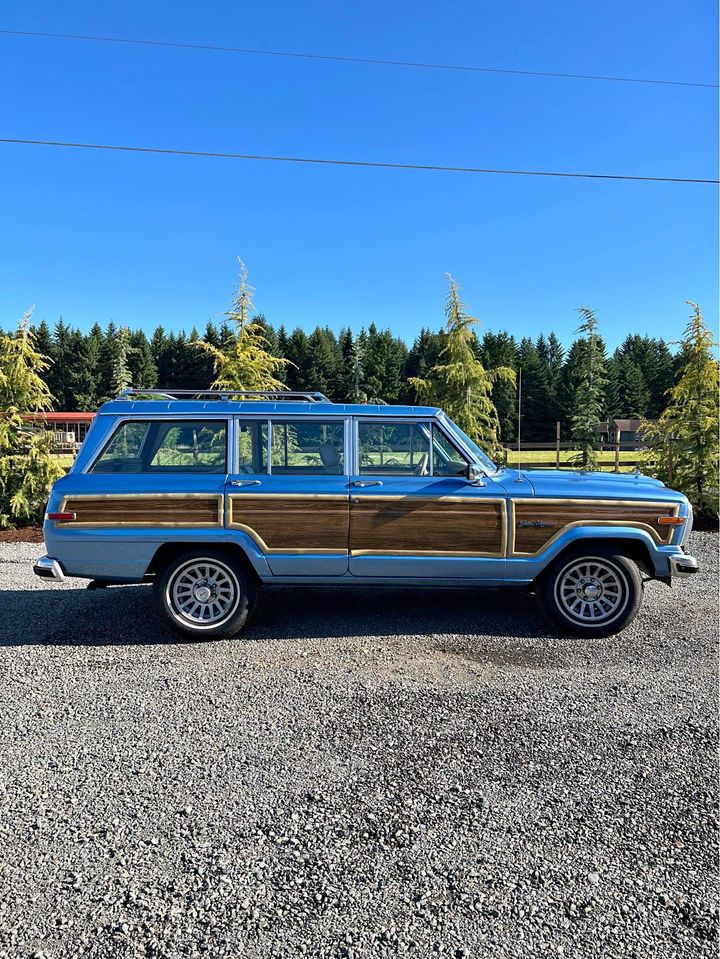Used Jeep Dana 44 Axles For Sale: A Comprehensive Buyer’s Guide
Used Jeep Dana 44 Axles For Sale: A Comprehensive Buyer’s Guide jeeps.truckstrend.com
For any serious Jeep enthusiast, the discussion inevitably turns to axles. While stock Dana 30 and Dana 35 axles are sufficient for light trail use, those venturing into more challenging off-road terrain quickly discover their limitations. This is where the venerable Dana 44 axle steps in – a robust, widely supported, and highly sought-after upgrade for many Jeep platforms. If you’re looking to bolster your Jeep’s drivetrain without breaking the bank on brand-new aftermarket solutions, the used market for Dana 44 axles is a treasure trove of potential.
This comprehensive guide will navigate the landscape of used Jeep Dana 44 axles for sale, covering everything from why they’re the preferred choice to how to find, inspect, and integrate them into your build.
Used Jeep Dana 44 Axles For Sale: A Comprehensive Buyer’s Guide
Why Choose a Dana 44 for Your Jeep? The Strength Advantage
The Dana 44 is an iconic axle, renowned for its superior strength and durability compared to its smaller brethren, the Dana 30 (front) and Dana 35 (rear), commonly found in many stock Jeeps. Here’s why it’s the go-to upgrade for off-roaders:
- Increased Strength: The Dana 44 boasts a larger ring and pinion, a larger diameter axle shaft, and a more robust housing. This translates directly to a higher load-carrying capacity and significantly reduced risk of breakage under stress, especially when running larger tires or tackling aggressive obstacles.
- Larger Components: From the differential gears to the axle tubes and U-joints (on front axles), the Dana 44 utilizes beefier components designed to withstand more abuse.
- Better Aftermarket Support: Due to its popularity, the Dana 44 has an unparalleled aftermarket. This means a vast array of lockers, limited-slip differentials, chromoly axle shafts, heavy-duty covers, and custom gear sets are readily available, allowing for endless customization and further reinforcement.
- Versatility: Dana 44s were used in various Jeep models over the years, both front and rear, and in different configurations (high-pinion, low-pinion). This widespread application makes them relatively easier to find and adapt to different build requirements.
- Common Upgrade Path: For many Jeep owners, swapping in Dana 44s is the logical and most cost-effective next step after maxing out the capabilities of their stock axles.

Identifying Dana 44 Axles: What to Look For
Before you start hunting, it’s crucial to know how to identify a genuine Dana 44 and distinguish it from other axles. While specific dimensions can vary, here are the tell-tale signs:
- Differential Cover Shape: The most distinctive feature is the differential cover. A Dana 44 cover is typically a rounded, somewhat oval shape with 10 bolts holding it on. This immediately differentiates it from a Dana 30 (10 bolts, but more rounded, almost circular) and a Dana 35 (10 bolts, but with a more rectangular, squarish bottom edge and a drain plug often present). A Dana 60, for comparison, has 12 bolts and a much larger, more robust housing.
- Axle Tube Diameter: While not always easy to measure precisely without tools, Dana 44 axle tubes are generally larger in diameter than Dana 30/35 tubes.
- Casting Numbers: Dana axles often have "DANA" or "D44" cast into the housing itself, usually near the differential pumpkin. However, these can be obscured by dirt or paint.
- Common Jeep Applications:
- TJ Wrangler: Only Rubicon models came with factory Dana 44s, both front and rear. Non-Rubicon TJs had Dana 30 front and Dana 35 rear.
- JK Wrangler: All JK Rubicons came with Dana 44s front and rear. JK Sport/Sahara models typically had a Dana 30 front and a Dana 44 rear.
- XJ Cherokee/MJ Comanche: Some XJ/MJ models (especially those with the Tow Package or specific trims) came with a rear Dana 44.
- ZJ Grand Cherokee: Rare instances of rear Dana 44s in specific V8 models.
- YJ Wrangler: Early YJs had a Dana 30 front and Dana 35 rear. Later models might have a Dana 30 front and a stronger Dana 44 or Dana 35C rear.
- High Pinion vs. Low Pinion: Front Dana 44s can be high-pinion (HP) or low-pinion (LP). HP Dana 44s (like those found in older Ford F-150s or some early Broncos, and occasionally swapped into Jeeps) are generally stronger for front applications due to better driveshaft angle and gear tooth engagement under load. Most stock Jeep Dana 44s (TJ/JK Rubicon front) are low-pinion.
Key Considerations When Buying Used Dana 44 Axles
Purchasing used axles requires careful inspection and research. A bad buy can quickly turn into a costly headache.
-
Condition Assessment: This is paramount.
- Rust: Surface rust is common and generally acceptable, but heavy, pitting rust or rust that has eaten into the housing or tubes is a red flag.
- Bent Tubes: Sight down the axle tubes. Any visible bends indicate impact damage and will require professional straightening or replacement, making the axle undesirable.
- Cracks: Inspect the differential housing and tube welds for any hairline cracks. These are critical failures.
- Fluid Leaks: Check around the differential cover, pinion seal, and axle seals for fluid leaks. While seals are replaceable, it indicates a lack of maintenance or potential bearing issues.
- Bearing Play: For front axles, check the ball joints and U-joints for excessive play. For both front and rear, try to rotate the pinion flange and check for excessive play or grinding noises, which could indicate worn pinion or carrier bearings.
- Brake Components: Note the condition of rotors, calipers, and brake lines. They might need replacement.
-
Gear Ratio:
- If you’re buying a pair (front and rear), ensure they have the exact same gear ratio. Running different ratios will destroy your transfer case.
- Consider the gear ratio relative to your tire size. Larger tires require lower (numerically higher) gear ratios for optimal performance and fuel economy. Common Dana 44 ratios include 3.73, 4.10, 4.56, 4.88, 5.13, etc. Ask the seller for the ratio or be prepared to open the differential to inspect the ring gear stamp (e.g., 41:10 = 4.10).
-
Locker/LSD:
- Some factory Dana 44s (e.g., TJ Rubicon, JK Rubicon) came with electric lockers. Confirm if they are present and, if possible, test their functionality.
- Aftermarket lockers or limited-slip differentials (LSDs) might have been installed. These add significant value but also complexity if they are not functioning correctly.
-
Axle Shafts:
- Are they stock or aftermarket chromoly? Chromoly shafts are an upgrade and a bonus. Inspect the splines for wear.
-
Bolt Pattern & Width:
- Bolt Pattern: Most Jeep Dana 44s will have the standard 5×4.5" (TJ/YJ/XJ/ZJ) or 5×5" (JK/JL/Gladiator) bolt pattern. Ensure it matches your wheels.
- Width: Crucially important for proper fitment. A TJ Dana 44 is narrower than a JK Dana 44. Swapping axles between different models often requires custom wheels, spacers, or fender modifications. Know the width of your current axles and the potential donor axles.
-
Mounting Brackets:
- If the axle is coming from a different vehicle type or even a different generation of Jeep, the mounting brackets for control arms, track bars, shocks, and coil springs will likely be in the wrong location or entirely absent.
- Be prepared to cut off old brackets and weld on new ones specific to your Jeep model. This is a significant part of the installation process and adds to the overall cost if you’re not doing the fabrication yourself.
-
Steering & Braking Components:
- Are the steering knuckles, ball joints, unit bearings (front), calipers, rotors, and brake lines included? What is their condition? Often, these components will be worn and need replacement, so factor that into your budget.
The Process of Buying Used Dana 44 Axles
- Research Compatibility: Before you even look, understand what Dana 44s will physically fit under your Jeep with the least amount of fabrication. Online forums, dedicated Jeep websites, and build threads are invaluable resources.
- Set a Budget: Beyond the purchase price, factor in potential costs for:
- Shipping or transportation.
- New mounting brackets and welding.
- New seals, bearings, and fluids.
- Brake components (rotors, calipers, pads, lines).
- Steering components (ball joints, tie rod ends).
- Gears (if you need to re-gear or replace worn ones).
- Lockers/LSDs (if not included or you want to add one).
- Labor if you’re not doing the work yourself.
- Where to Look:
- Online Forums & Classifieds: Jeep-specific forums (e.g., JeepForum, Pirate4x4, JK-Forum), Craigslist, Facebook Marketplace, and dedicated Facebook groups for Jeep parts are excellent places to start.
- Salvage Yards/Junkyards: Often the cheapest option, but selection can be limited, and inspection might be harder. Look for vehicles that were rolled rather than front- or rear-ended.
- Specialized Off-Road Shops: Some shops deal in used parts or take trade-ins. They might be more expensive but often offer better-inspected products.
- Private Sellers: The most common source. Be prepared to travel for a good deal.
- Inspection (Crucial!): Always inspect in person if at all possible. Bring a flashlight, a magnet (to check for non-steel repairs), and a knowledgeable friend if you’re unsure. Ask detailed questions about the axle’s history.
- Negotiation: Prices vary wildly based on condition, location, included components, and urgency of sale. Don’t be afraid to negotiate, especially if you spot issues during inspection.
- Transportation: Axles are heavy. Plan how you will transport them – a truck or trailer is usually necessary.
Installation & Integration Tips
Swapping axles is a significant undertaking that requires mechanical aptitude, proper tools, and often welding skills.
- Professional vs. DIY: Unless you have experience with suspension and drivetrain work, consider having a reputable off-road shop perform the installation. Incorrect welding or alignment can lead to dangerous failures.
- Bracketry: The most common fabrication step is cutting off the old brackets and welding on new ones specific to your Jeep’s suspension design. Ensure precise placement for correct pinion angle, caster, and wheelbase.
- Brake Lines & E-Brake Cables: You’ll likely need new, longer brake lines and possibly new E-brake cables to accommodate the new axle and any lift you have.
- Driveshafts: The new axle’s pinion angle and yoke might require new or modified driveshafts.
- Steering Linkage: For front axles, ensure your steering linkage (tie rod, drag link) is compatible and robust enough for the new axle.
- Fluids: Always drain any old fluid and refill with fresh, appropriate gear oil after installation.
- Break-in: If new gears or bearings were installed, follow a proper break-in procedure.
Potential Challenges and Solutions
- Finding the Right One: Patience is key. The exact axle you need might not be immediately available locally. Expand your search radius.
- Unknown History: Most used axles come with little to no history. A thorough visual and manual inspection is your best defense. Assume it will need new seals and bearings unless proven otherwise.
- Shipping Costs: Axles are heavy and bulky. Shipping can be expensive. Prioritize local pickup if possible.
- Compatibility Issues: Double-check every measurement and specification. "Measure twice, cut once" applies here in spades.
- Rust/Damage: Be realistic about what you’re willing to take on. Minor surface rust is fine, but structural damage or severe wear warrants walking away unless the price reflects a major rebuild.
Used Jeep Dana 44 Axles For Sale: Estimated Price Guide
Please note: Prices for used axles vary wildly based on location, condition, included components (brakes, lockers, shafts), and current market demand. This table provides estimated ranges and common configurations. Always confirm details with the seller.
| Axle Type & Source Jeep Model | Typical Condition | Included Components | Estimated Price Range (USD) | Notes |
|---|---|---|---|---|
| TJ Rubicon Rear Dana 44 | Good Used | Housing, shafts, diff, disc brakes, electric locker (functional/non-functional) | $800 – $1,800 | Highly sought after, direct bolt-in for TJs. Locker adds significant value. |
| TJ Rubicon Front Dana 44 | Good Used | Housing, shafts, diff, unit bearings, knuckles, electric locker (functional/non-functional) | $1,200 – $2,500 | Also highly sought after, direct bolt-in. Front lockers typically command higher prices. |
| JK Sport/Sahara Rear Dana 44 | Good Used | Housing, shafts, diff, disc brakes (no locker) | $600 – $1,200 | Wider than TJ axles. Common upgrade for JK Dana 35s. |
| JK Rubicon Front Dana 44 | Good Used | Housing, shafts, diff, unit bearings, knuckles, electric locker (functional/non-functional) | $1,500 – $3,000 | Wider than TJ axles. Premium due to locker and strength. |
| JK Rubicon Rear Dana 44 | Good Used | Housing, shafts, diff, disc brakes, electric locker (functional/non-functional) | $1,000 – $2,000 | Wider than TJ axles. Premium due to locker. |
| XJ/MJ/ZJ Rear Dana 44 | Varies (often older) | Housing, shafts, diff, drum brakes (no locker) | $300 – $700 | Narrower than TJ/JK. Requires disc brake conversion for most modern Jeeps. |
| Aftermarket Swap Axle (e.g., Ford 8.8, Sterling 10.25 – often misidentified as Dana 44) | Varies (often cut & re-tubed) | Varies (often stripped) | $200 – $800 | Not a true Dana 44, but common swaps. Require significant fabrication. |
| Stripped Housing Only | Good (no tubes, shafts, diff) | Bare housing | $150 – $400 | Requires full build-up, useful for custom builds. |
| Bent/Damaged Axle | Poor | Varies (for parts) | $50 – $250 | For specific parts only (e.g., diff carrier, gears, diff cover). |
Frequently Asked Questions (FAQ)
Q1: Can I put a TJ Dana 44 in a YJ?
A1: Yes, it’s a common swap. The TJ rear Dana 44 is a nearly direct bolt-in for a YJ. The TJ front Dana 44 requires custom spring perches and shock mounts, but the width is similar.
Q2: What’s the difference between a high-pinion and low-pinion Dana 44?
A2: A high-pinion (HP) axle has the pinion gear positioned above the centerline of the ring gear, while a low-pinion (LP) axle has it below. HP axles are generally stronger for front applications because the gear teeth are loaded on the "drive" side during forward motion, which is the stronger side of the tooth. They also offer better driveshaft clearance. Most stock Jeep Dana 44s (TJ/JK Rubicon) are LP.
Q3: Do I need to re-gear after installing a Dana 44?
A3: If your new Dana 44 has a different gear ratio than your existing axle (or if you’re only swapping one axle), then yes, you absolutely must re-gear the other axle to match, or re-gear both to your desired ratio. Failing to do so will destroy your transfer case. Also, if you plan to run larger tires, you’ll likely want to re-gear to a numerically higher ratio for optimal performance.
Q4: How do I know if the factory locker (e.g., Rubicon) works?
A4: This is difficult to test outside of the vehicle. If the seller has the wiring harness and a 12V source, they might be able to show it engaging. Otherwise, assume it might need repair or replacement. Factor this into your offer.
Q5: What’s a common issue with used Dana 44s?
A5: Worn bearings (pinion, carrier, axle shaft), leaky seals (pinion, axle), and worn ball joints/unit bearings (front) are common. These are wear items and generally expected to be replaced during a rebuild. Bent axle tubes or cracked housings are major issues.
Q6: Is it worth rebuilding a used Dana 44 before installing it?
A6: In most cases, yes. While it adds to the upfront cost, replacing all seals, bearings, and potentially U-joints/ball joints ensures the axle is fresh and reliable. It’s much easier to do this on a workbench than under the vehicle. If the gears look worn, now is also the time to replace them.
Conclusion
The allure of used Jeep Dana 44 axles for sale is undeniable. They offer a significant upgrade in strength and reliability for your off-road adventures without the hefty price tag of brand-new aftermarket units. However, purchasing a used axle is not a simple transaction; it requires diligent research, meticulous inspection, and a realistic understanding of the potential additional costs for refurbishment and installation.
By knowing what to look for, understanding the potential challenges, and approaching the purchase with a well-informed strategy, you can successfully acquire a solid Dana 44 that will serve as the backbone for countless miles of rugged trails, transforming your Jeep into the capable off-road machine you’ve always envisioned. Happy hunting, and may your axles be strong!




